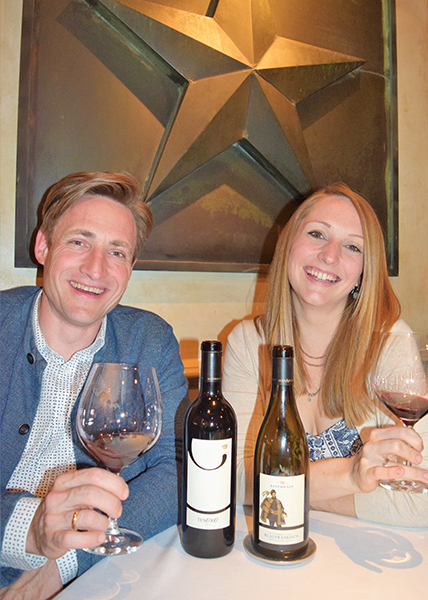There are few things I enjoy more than the opportunity to taste wines made from unusual and uncommon grapes.
At a major portfolio tasting in Manhattan recently, many of the tasters were exploring the room and tasting the big and well-known Cabernets, Chardonnays and Pinot Noirs. I do this sometimes to see what a particular vintage, producer or region is delivering, but I was on a mission to taste wines I rarely see. I sought out Grüner Veltliner, Gewürtztraminer, Pinot Gris, Pinotage, Touriga Nacional and Carmenère, among others. Most of the relatively unknown or under-purchased wines over-deliver. That is, to be competitive in the marketplace, to sell the wine, pricing has to be attractive relative to the big grapes or big names.

I had the same reaction to another recent experience, an intimate luncheon with Stefan Tscheppe, general manager of Austria’s Esterházy Wines.
The Esterházy name goes back to the 1400s in Hungary and is now based in Austria. There have been barons, counts, princes and princesses bearing the royal family name and growing the family influence and holdings. They have been making wine, and many other consumer goods, for 250 years and in 2006 (finally), they custom-built a beautiful, Cubist winery in sight of their gorgeous, massive Baroque castle. All of the most modern winemaking techniques are employed here with all of the tanks and hoses arranged so gravity, rather than pumps, gently moves the juice from one tank to another. Their 220 acres of planted vines are located between the large Lake Neusiedl to the south and east and a modest mountain range, Leithagebirge, to the north and west, in the eastern edge of Austria abutting Hungary. The moderating effect of the open water softens any cold weather in the early and late season and reflects the sun, which promotes ripeness. The mountains help to block northern winds and cold.
Esterházy makes wine from some of the noble varietals — Pinot Noir, Merlot, Sauvignon Blanc and Chardonnay. But what got my attention is that it grows and vinifies grapes from Blaufränkisch, Zweigelt, Furmint and Gelber Muskateller. Tscheppe told me they focus on Blaufränkisch and Chardonnay. We started off with a Pinot Blanc from 2014. He mentioned this vintage was a particularly tough one in Austria, but this wine was lovely, with soft but present citrus notes and a pleasant freshness that lingers on the palate. It felt like liquid sunshine with a backbone. This was a wonderful welcome.
Then we moved on to Esterházy’s Blaufränkisch. This grape, also known as lemburger, is grown fairly extensively throughout eastern and central Europe and can be compared to Pinot Noir. Like Pinot Noir, well-produced Blaufränkisch will show evolving flavors and multiple layers, and time swirling the wine in the glass will be rewarded with new and pleasant surprises. The 2013 red is 100 percent Blaufränkisch, showing rich, red cherry with soft hints of fine pepper and licorice, indicating the use of used oak barrels for aging.
“Austria is largely a beer drinking country,” Tscheppe said. “Austria is a small wine region, making mostly white wines. Our Blaufränkisch takes a long time to ripen to get to proper alcohol and flavor concentration levels. But when it finally does — Mmmm.”
Our next wine was the 2010 red. It was a cooler vintage, showing darker cherry flavors with a pronounced spiciness. These wines could be drunk within three to five years of harvest but will easily last 20 years. We then moved to a 2013 single vineyard Blaufränkisch, showing bright red cherry tempered with textured coffee notes and spice. And our final wine was the Tesoro 2012 with dark cherry and a refined and restrained oak influence with big aromatics dancing out of the glass.
All of these wines sell in the United States for around $30 for the blends of different vineyards and around $50 for the single vineyard wines. But each of them would compare favorably to some well-known producers or grape varietals at double the cost. Look for some Esterházy wine for your next event. Your friends will be impressed and excited to try something new and truly royal.
Write me at doug@dougpaulding.com.

